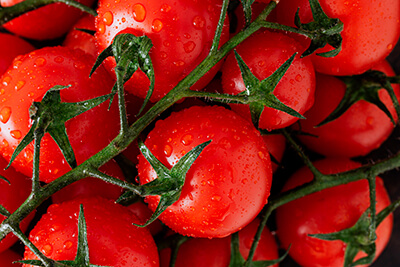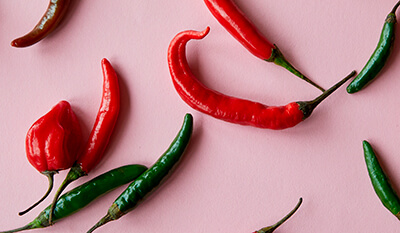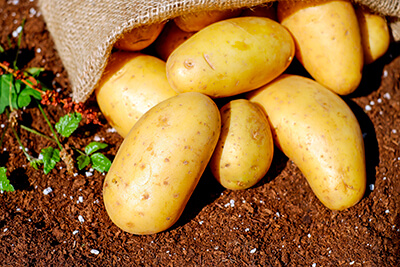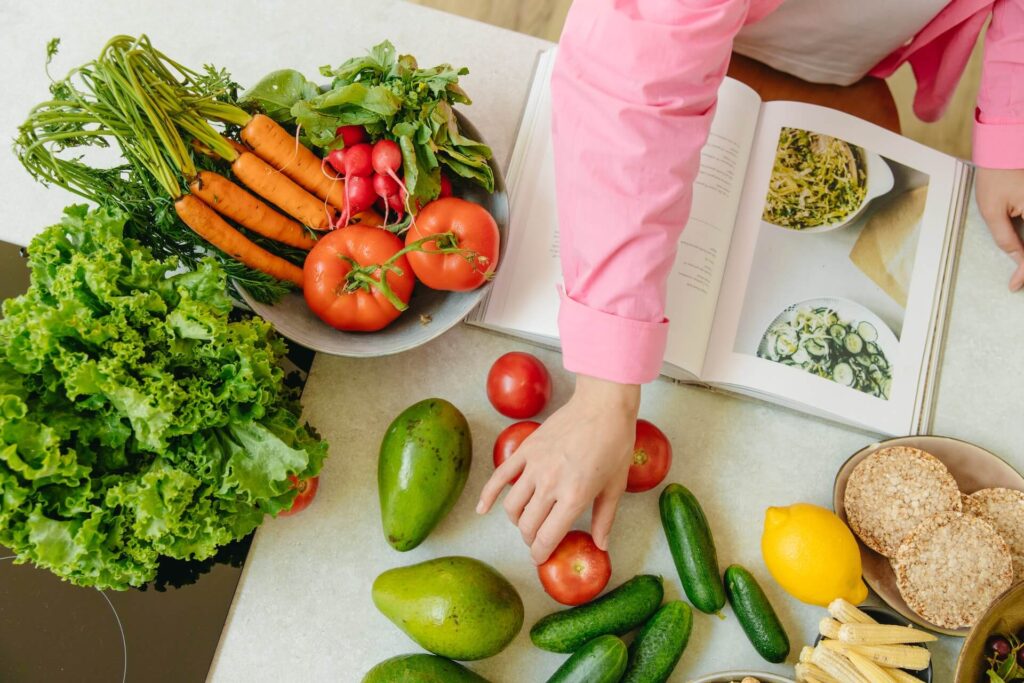Florists
Beginners Guide to Growing Fruit & Veg
Gardening can be a fulfilling and satisfying activity that not only yields fresh, flavourful produce but also helps reduce your carbon footprint while saving money. However, for beginners, it can be overwhelming to know where to start.
💡 Apart from growing your own flowers, choosing low-maintenance plants that are easy to grow is an excellent way to begin your gardening journey .
In this article, we have compiled a list of 28 straightforward fruits and vegetables to grow, along with tips on how to care for them.
The Benefits of Growing your own Fruits and Vegetables
Growing your own fruits and vegetables can provide you with numerous benefits. Not only does it provide you with delicious and fresh produce, but it also helps the environment by reducing your carbon footprint. Plus, there’s something so satisfying about being able to harvest your own crop just as there is when your grow your own carnation flowers! Here are some other benefits of growing your own fruits and vegetables:
- Money savings: Growing your produce can save you money in the long run. Once you invest in the necessary supplies to grow vegetables, you will reap the rewards of many vegetables for years.
- Nutritional value: Home-grown produce is often more nutritious than store-bought.
- Variety: Growing your own produce allows you to grow fruits and vegetables unavailable in stores.
- Sense of accomplishment: Growing your own crop can be an incredibly fulfilling experience since it’s something you did on your own!
Why Beginners Should Start with Low-maintenance Plants
For those new to gardening, starting with low-maintenance plants is a great way. Low-maintenance plants require less time and effort than more complex plant varieties, making them ideal for beginners. Additionally, low-maintenance plants can be easier to care for and may have a higher success rate for new gardeners.
The List of the 28 Easiest Vegetables and Fruits to Grow
Low-maintenance Vegetables to Grow
Tomatoes:

Tomatoes are a popular vegetable for beginning gardeners. They are easy to grow and can be harvested in just a few weeks. Tomatoes are incredibly versatile and can be used in salads, sauces, or eaten raw with some salt.
When growing tomatoes in a container garden, ensure they get plenty of sunlight and water. You should also fertilize your soil periodically throughout the season for the best results.
Cucumbers:

Cucumbers are another great vegetable gardening choice for beginners since they don’t need a lot of maintenance. All they require is ample sun, water, and good soil that drains well.
When harvesting cucumbers, it’s essential to pick them before they become too large, as this will affect their flavour. Cucumbers can be used in salads or pickled for later use.
Radishes:

Radishes are one of the quickest and favourite vegetables to harvest at only 21 days from sowing! They prefer cooler temperatures and can quickly be grown in containers or raised beds.
Keeping radishes well-watered during the growing season is essential to ensure maximum flavour and sweetness. Radishes have a spicy taste and crunchy texture that adds character to any dish!
Lettuce:

Growing lettuce is an easy way to add fresh greens to your diet! Lettuce prefers full sunlight but can also tolerate partial shade during hot summer.
Keeping lettuce well-watered while avoiding over-watering is essential, as this will cause the leaves to become mushy and tasteless. You can experiment with wide lettuce varieties like romaine, butterhead, leaf lettuce, and more!
Spinach:

Spinach is a nutrient-dense leafy green vegetable that grows quickly when given adequate care and attention. Spinach prefers cooler temperatures, so it’s best planted in the spring or fall when temperatures aren’t too hot outside.
When harvesting spinach from a small garden, make sure not to pull out entire plants; instead, cut individual leaves off young plants with scissors leaving enough on the plant so it continues growing new leaves all season long!
Carrots:

Carrots are a great vegetable choice for beginner gardeners, thanks to their hardiness and sweet taste when harvested correctly! Carrot seeds should be planted directly into the ground after the danger of frost has passed, as carrots don’t transplant well once established in garden soil.
Carrots prefer slightly acidic soil enriched with organic matter like compost before planting for optimal growth potential!
Beans:

Beans come in many different sizes and colours, making them an attractive option for beginning gardeners who want something unique in their gardens!
Beans grow best when direct and sown directly into the ground once the soil temperature warms up (around 45°F). Keep beans consistently watered while avoiding letting them dry out completely, as this will stunt growth!
Peppers:

Peppers come in many shapes, sizes, colours and flavours, making them an exciting addition to any garden! Peppers prefer warm climates, so ensure soil temperature reaches at least 65°F before planting seeds directly into the ground.
Be sure not to over-water peppers as this can lead to root rot which will negatively impact production yields later on down the line when harvesting time comes around!
Zucchini:

Zucchini is notoriously known for being one of the easiest vegetables to grow because it requires minimal effort from the start until the end of harvest time!
Zucchini needs plenty of sunlight (at least 6 hours per day) along poor soil along with regular watering intervals throughout its growing season if you want large fruits with high yields come harvest time – even if you let some of the lettuce seeds or the fruits get too big, they still make great additions to casseroles and stir-fries!
Squash

Squash is another excellent choice for beginner gardeners, as it’s one of the easiest vegetables to grow. Squash is a warm-season crop that prefers full sunlight, well-drained soil, and plenty of water.
It can be planted directly into the ground during late spring or early summer when the soil temperature reaches at least 70°F. Squash also does its best with consistent moisture, watering every few days during its growing season.
For best results, it’s essential to keep weeds away from squash plants and rotate planting locations each year to avoid disease build-up in the soil.
Regarding harvesting, the squash should be pickled when fruits are still young and small – this will ensure the best flavour and texture come harvest time!
Onions

Onions are a great addition to any vegetable garden as they’re easy to grow and can be harvested in as little as 2-3 months!
Onions prefer full sun and nutrient-rich soil – if your soil doesn’t have enough organic matter, try adding compost or aged manure before planting for the best results.
When ready to harvest onions, pull them up from the ground (gently!) – leave some of the roots intact so the bulb will stay together when stored.
Garlic

Garlic is a beautiful vegetable in your garden as it’s delicious and provides many health benefits.
Garlic likes rich and well-drained soil with plenty of organic matter, so be sure to add compost or aged manure before planting cloves – plant garlic cloves pointed side up at least 1″ deep into the ground.
It needs regular watering while avoiding overwatering as this can lead to root rot which will stunt growth and lower yields come harvest time! When ready to be harvested, pull out entire plants from the ground – leave some of not the leaves and roots intact for easy storage later on.
Potatoes

Potatoes are an excellent choice for beginner gardeners as they’re easy to grow and require minimal effort once established.
Potatoes prefer well-drained, slightly acidic soil rich in organic matter like compost or aged manure – this will help promote optimal growth potential when planting.
When ready to harvest, pull out entire plants from the ground – leave some roots intact so the potatoes don’t break apart when stored!
Sweet Potatoes

Sweet potatoes are a great addition to any vegetable garden as they’re easy to grow and require minimal effort once established.
Sweet potatoes prefer well-drained, slightly acidic soil rich in organic matter like compost or aged manure – this will help promote optimal growth potential when planting.
When ready to harvest, pull out entire plants from the ground – leave some roots intact so the sweet potatoes don’t break apart when stored!
Low-maintenance Fruits to Grow
Blackberries

Blackberries are low-maintenance fruit that is easy to grow and require minimal effort. They prefer full sun and well-drained soil, making them ideal for growing in raised beds or containers.
Blackberry bushes need regular watering during the summer months and should be pruned annually for optimal yields come harvest time.
The best time to plant blackberry plants is late to early spring when the soil temperature is between 55°F – 65°F – this will ensure optimal growth potential! When ready to harvest, pick ripe berries off of the bushes as they appear.
Melons

Melons are another low-maintenance fruit quickly grown in raised beds or containers. Melons prefer warm weather and plenty of direct sunlight, making them ideal for growing in raised beds during summer.
Planting should occur when temperatures reach at least 70°F, and regular watering is essential during the growing season to ensure the best results. Rotating planting locations each year is critical as this will help prevent disease build-up in the soil.
When they turn yellow or orange on the outside, harvest melons indicate ripeness!
Apples

Apples are among the most popular fruits and make a great addition to any vegetable garden. Apples prefer full sun and require nutrient-rich soil with plenty of organic matter, such as compost or aged manure.
They also need regular watering during their growing season – too much water, however, can lead to root rot which will stunt fruit trees’ growth and lower yields come harvest time.
When ready to be harvested, pick ripe apples off the tree when they turn red or yellow, depending on the variety.
Pears

Pears are another popular fruit for vegetable gardens. They prefer full sun and well-drained, slightly acidic soil with plenty of organic matter.
Pears also require regular watering during their growing season – too much water, however, can lead to root rot which will stunt the plant in growth and lower yields come harvest time.
When ready to be harvested, pick ripe pears off the tree when they turn yellow or brown, depending on the variety.
Peaches

Peaches are low-maintenance fruit quickly grown in raised beds or containers.
Peaches prefer full sun and well-drained, slightly acidic soil with plenty of organic matter.
When ready to be harvested, pick ripe peaches off the tree when they turn yellow or orange, depending on the variety.
Plums

Plums are versatile and nutritious fruit that can be enjoyed in many ways. They are delicious, fresh, or cooked and high in vitamins C, A and K, potassium, and antioxidants.
Plums require well-draining soil to thrive and should be watered regularly for best results. Pruning is c not necessary for plums, but if done correctly, it can improve fruit quality by promoting better airflow and preventing disease.
Plums can be canned, made into jams and jellies, or dried as a snack. They are often used in baking because of their sweetness and make excellent compotes or toppings more inspiration for desserts and most vegetables.
Even the leaves of the plum tree have medicinal value when brewed into teas that can aid digestion. Plums come in various colours, from green to black, yellow to red, making them an attractive addition to any garden or landscape.
With proper care, plums will provide small gardens with years of enjoyment with their sweet flavour and abundance of nutrition!
Cherries

Cherries are a delicious and nutritious treat that can quickly be grown in raised beds or containers. They require full sun and well-drained, slightly acidic, sandy soil with plenty of organic matter.
When ready to be harvested, pick ripe cherries off the tree when they turn red or black, depending on the variety. Cherries can be eaten fresh, canned, or frozen for later use.
They make an excellent addition to pies, other desserts, jams, and jellies! And remember the cherry blossom branches – perfect for adding an extra pop of colour to any arrangement!
Grapes

Grapes are another popular fruit for vegetable gardens. Grapes require full sun and well-drained, slightly acidic soil with plenty of organic matter.
When ready to be harvested, pick ripe grapes off the vine when they turn purple or black, depending on the variety. Grapes can be eaten fresh or used in various recipes, from jams and jellies to winemaking!
And remember raisins – are perfect for adding sweetness and texture to many dishes!
Kiwi

Kiwi is an excellent addition to any vegetable garden. It boasts an impressive nutritional profile (rich in vitamin C, potassium and antioxidants) and makes an attractive, edible landscape plant!
Kiwi requires full sun and well-drained, slightly acidic soil with plenty of organic matter.
When ready to be harvested, pick ripe kiwis off the vine when they turn brown or black, depending on the variety. Kiwis can be eaten fresh or used in many recipes, from jams and jellies to smoothies and salads!
Lemons

Lemons are a popular citrus fruit that can quickly be grown at home. They require well-draining soil and regular watering to thrive.
Lemon trees can be grown in pots or planted directly in the ground. They are high in vitamin C and are used in cooking, drinking, and cleaning. They are also used in traditional medicine for their many health benefits.
Oranges

Oranges are also considered to be one of the easiest fruits to grow, making them an excellent choice for beginners. They require plenty of sunlight and well-drained soil, and they are relatively low maintenance, only needing occasional watering and pruning.
With proper care, an orange tree can harvest sweet, juicy oranges rich in vitamin C and other essential nutrients. Additionally, oranges can be grown in various climates, making them versatile fruit for many regions.
Grapefruits

Grapefruit trees are low-maintenance and can grow up to 30 feet tall. Grapefruits are considered one of the easiest fruits to grow due to their resilience and adaptability to different soil types and weather conditions.
They thrive in subtropical and tropical climates and can be produced from seeds or cuttings.
Grapefruit trees require total sun exposure and regular watering, but they are generally low-maintenance and do not require frequent fertilization. Additionally, grapefruits are known for their high nutritional value and refreshing taste, making them popular among home gardeners and farmers.
Tangerines

Tangerines are often considered one of the easiest fruits to grow, especially in warmer climates. They are relatively low-maintenance and can be grown in containers or on the ground.
Tangerine trees typically produce abundant fruit and require little pruning. They also have few pest or disease issues compared to other fruit trees. With proper care and attention, anyone can enjoy a bountiful harvest of sweet, juicy tangerines from their backyard.
Pineapples

Pineapples are considered one of the easiest fruits to grow because they thrive in warm, tropical climates and require minimal maintenance.
They can be grown from the tops of existing pineapples, making them a cost-effective option for home gardeners.
Pineapples also have a high resistance to pests and diseases, making them a low-maintenance fruit to cultivate.
Tips for Growing Fruits and Vegetables
Preparing the Soil
A: It is essential to prepare the soil before planting. This includes removing weeds, adding compost or fertilizer, and ensuring the ground is well-draining.
Watering and Fertilizing
A: Fruits and vegetables require regular watering and fertilizing to thrive. It is important to water deeply and frequently, especially during hot weather. Fertilizing with organic materials or chemical fertilizers can provide the necessary nutrients.
Pests and Diseases Management
A: It is essential to monitor plants for pests and diseases and take appropriate measures to prevent or treat them. This may include using organic or chemical pesticides or fungicides.
Harvesting and Storage
A: Fruits and vegetables should be harvested when ripe and stored correctly to maintain freshness. Some fruits and vegetables can be canned, frozen or dried for later use.
Conclusion
Growing your own fruits and vegetables is a great way to save money, reduce your carbon footprint, and enjoy fresh and delicious produce. By starting with low-maintenance plants, beginners can get a taste for gardening and build their confidence. With the right care, these 28 easiest vegetables and fruits can provide a bountiful harvest and a sense of satisfaction. Remember to follow the tips for soil preparation, watering, pest management, harvesting, and storage to ensure success. Happy gardening!
Growing Fruits & Vegetables FAQ’s
Q: What are some of the best vegetables and the easiest vegetables to grow?
A: Green beans and bush beans are among the easiest vegetables to grow. They require minimal maintenance and can be grown in small spaces.
Q: What are some examples of low-maintenance fruits to grow?
A: Fruit bushes like strawberries, blueberries, raspberries, and blackberries are great low-maintenance options. Other fruits like oranges, lemons, grapefruits, tangerines, and pineapples can also be relatively easy to grow with well-draining soil and regular watering.
Q: What is the key to growing healthy fruits and vegetables?
A: The key to growing healthy fruits and vegetables is to provide them with well-draining soil, regular watering, and proper fertilization. Additionally, managing pests and diseases and harvesting at the right time are essential for maximizing the quality and yield of your crops.
Q: Can I grow these plants in small spaces or large containers?
A: Many of the easiest fruits and vegetables can be grown in small spaces or containers. For example, bush beans, strawberries, and blueberries can all be grown in containers on a patio or balcony.
Q: Are these fruits and vegetables high in nutritional value?
A: Yes, many of the fruits and vegetables on the list are high in nutritional value. For example, green beans are a goofier and vitamin C source, while fruit bushes like blueberries and blackberries contain antioxidants. Oranges, lemons, grapefruits, tangerines, and pineapples are all high in vitamin C.

